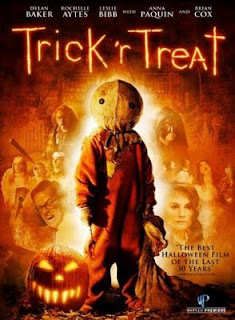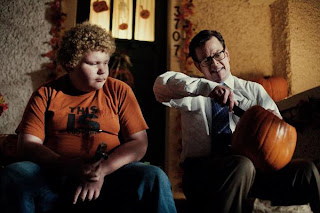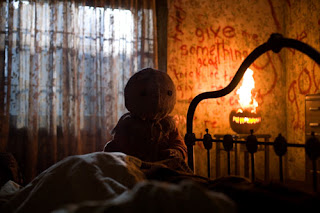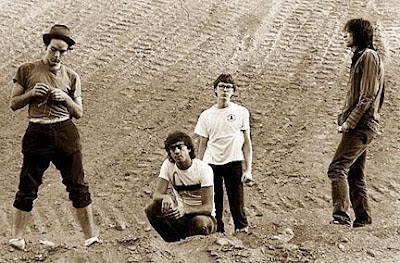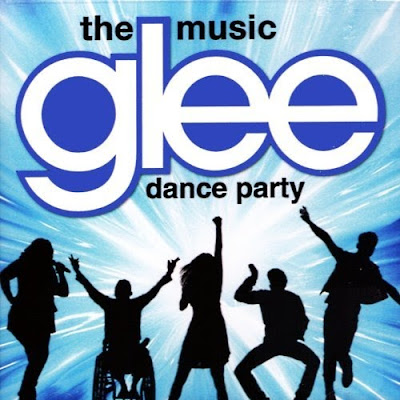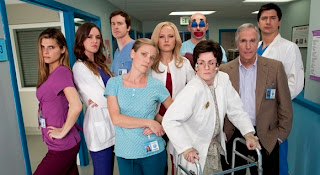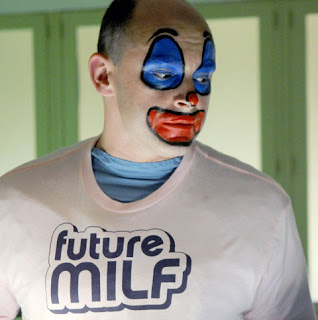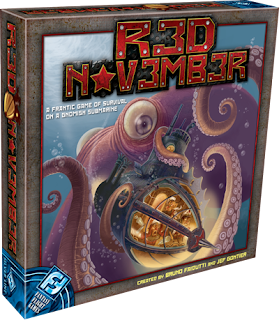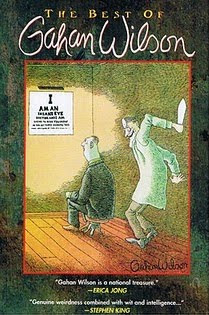
Plenty of baseball movies feature an underdog team whose pluck and determination enable them to come from behind and claim victory -- but what about when the deciding factors are money and computers? Moneyball -- based on the real-life 2002 baseball season -- is a drama that's as much about the structure of professional baseball as it is about playing the game.
Billy Beane (Brad Pitt), general manager for the Oakland A's, is tired. The A's just lost the division playoffs to the Yankees (who, not coincidentally, have a budget more tha four times greater than that of the A's). Beane also knows that his three best players are leaving the A's for teams that can offer them a lot more money. And team manager Art Howe (Philip Seymour Hoffman) has made it no secret that he'll be looking for another manager job.

Beane finds help from an unlikely source: Peter Brand (Jonah Hill), a low-level employee for a rival team. Brand believes a team can be put together not with traditional player scouting, but with mathematical formulas based on player stats. He also believes players that are undervalued for a number of reasons -- age, personal scandals, even looking funny -- can bring value for a fraction of the cost of star players. Beane hires Brand and makes him the assistant general manager, and they put together their "team of misfit toys." But they face skepticism across the board -- from the scouts who say baseball can't be reduced to just math, to the numerous fans blasting the A's on radio call-in shows -- and the losses in the early season don't help.
 Moneyball is an interesting sports movie, as we see the impact of money on the game -- and a radical new theory that challenges that factor. From the beginning to end, we see how the A's don't have a budget remotely close to the other teams, yet are expected to compete on an uneven playing field the same way they do. "Reducing" baseball to player stats analyzed to construct a team goes against most fans' feel for the game -- but how else to compete with teams that can easily buy the best players? The result isn't a cliched "heart and spunk bring victory" but rather a look at the stress of not just going for a championship, but doing it in a way no one else believes in. And the script, co-written by Aaron Sorkin, has some pretty sharp dialogue.
Moneyball is an interesting sports movie, as we see the impact of money on the game -- and a radical new theory that challenges that factor. From the beginning to end, we see how the A's don't have a budget remotely close to the other teams, yet are expected to compete on an uneven playing field the same way they do. "Reducing" baseball to player stats analyzed to construct a team goes against most fans' feel for the game -- but how else to compete with teams that can easily buy the best players? The result isn't a cliched "heart and spunk bring victory" but rather a look at the stress of not just going for a championship, but doing it in a way no one else believes in. And the script, co-written by Aaron Sorkin, has some pretty sharp dialogue.Moneyball is, for the most part, a two-person movie -- and they have two very good people for the roles. Brad Pitt does fine work as Billy Beane, a long-time player (flashbacks show the young Beane as being recruited rather than accepting a college scholarship -- then bombing on the field) who loves the game but is clearly tired of losing and (seemingly) not having the resources to win. Jonah Hill is best known for comedy, but he does a good job as Peter Brand. If Beane is the heart of the team, Brand is the brains, the man with the plan. Hoffman is decent as the clearly self-serving team manager, and Kerris Dorsey provides a sympathetic voice (and one of the few female characters in the movie) as Beane's concerned young daughter.
Moneyball is a very good drama, looking at a fundamental shift in playing America's pasttime. The cast is good, and the drama comes as much off the field as during the pivotal games.
Overall grade: B+
Reviewed by James Lynch

